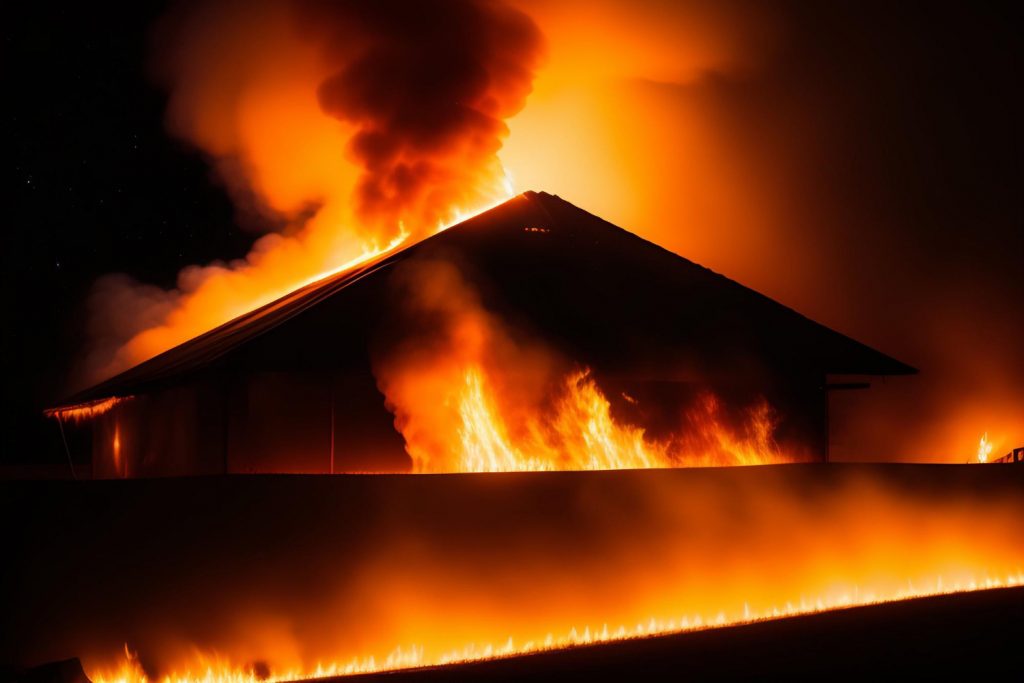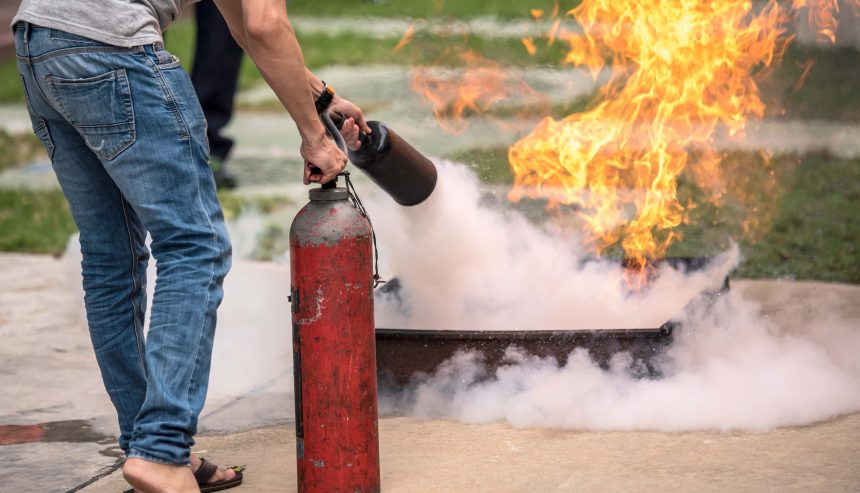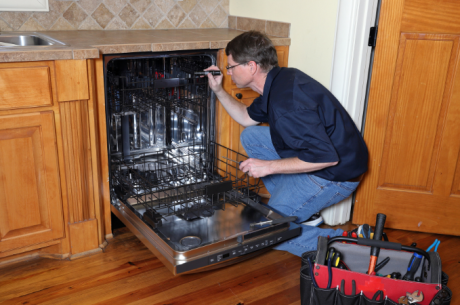Are you aware of the common fire hazards in your home? Fire safety is an important part of everyday life, and it’s up to us to understand and take steps to reduce the risks. As a certified fire safety expert, I’m here to tell you about some of the most commonly overlooked fire hazards that can put your family at risk – so keep reading!
In this article, we’ll explore different types of fires, their causes, and what you can do to make sure your home stays safe from these dangers. We’ll also look at ways to prevent fires before they start by identifying potential hazards in our homes and workplaces. Finally, we’ll discuss how best to respond if a fire does occur.
Overview of Fire Hazards
Fire hazards are a major risk to homes and businesses. Because of this, it’s essential to be aware of the potential dangers to ensure proper fire prevention and safety measures are taken. Fire causes can vary widely, but some common sources include electrical issues, improper storage or handling of flammable materials, unattended cooking appliances, smoking indoors, overloaded outlets and extension cords, damaged wiring or circuits, and more.
It’s important to identify these risks before they become an issue and require extensive fire damage restoration. By being proactive about fire safety, you can help protect yourself and your property from damage caused by fires.
Here are some of the most common fire risks you need to know:
Electrical Sources
Electrical sources are one of the leading causes of fire risks in homes, so it’s important to know extension cord safety tips to prevent electrical accidents at home. Faulty electrical wiring, overloaded home outlets, and damaged electrical cords can all spark a devastating house fire.
It’s important to regularly check your outlet connections and circuit breakers for any signs of damage or overheating. Additionally, using surge protectors with multiple plugs can help prevent an overload of electricity that could cause sparks and start a fire.
It’s also essential to be aware of the age and condition of your electrical equipment. Old appliances have been known to short out due to worn-out wires and insulation. If you notice frayed edges on cords or exposed wiring, it’s time to replace them immediately – this includes extension cords as well. Anything plugged into these faulty devices should not be used until they’re replaced by a professional electrician.
Lastly, avoid running too many power strips off of one single outlet; this, too, can lead to potential fire risks if there is too much current being drawn from one source at once. Overloading circuits by plugging in too many devices is never safe and puts your family at risk for a serious disaster.
Flammable Materials and Liquids
Common combustible liquids include gasoline, diesel fuel, kerosene, alcohol, and many types of paint thinners. Hazardous chemicals such as acids can be highly flammable when mixed with other substances. Some dangerous gases are also highly volatile and may ignite under certain conditions; examples include methane, propane, butane, acetylene, and hydrogen.
Additionally, volatile solvents like lacquer thinner and mineral spirits should always be stored in a safe area away from ignition sources or open flames due to their high vapor pressure. These hazardous items require extra caution when handling them since even small amounts can lead to disastrous consequences if ignited.
It’s essential for everyone working around these substances to take the necessary safety precautions to ensure that any accidental fires are avoided at all costs. That said, it’s just as important to understand how heating equipment and appliances can create another set of risks for property owners.
Heating Equipment and Appliances
Heating equipment and appliances are among the most common causes of residential fires. To prevent a potential disaster, it’s essential to follow basic safety practices. Heating equipment should be regularly inspected for signs of wear or deterioration, and heating appliances must be kept clean from dust and debris buildup.
Combustible items must also be at least three feet away from any heat source in order to reduce fire hazards. Never leave heating equipment unattended while on; always turn off all your home’s heating sources when leaving your house or going to sleep. Home maintenance is key in reducing fire risks and ensuring the highest levels of safety in your home.
Home Maintenance Tips to Reduce Fire Risks

It’s equally important to understand how home maintenance can reduce fire risks. Fire prevention begins with a homeowner’s knowledge of what must be done in order to keep their family safe. Here are several home maintenance tips to help reduce fire hazards:
- Smoke Alarms: Install quality smoke alarms on every level of your house and inside each bedroom. Test them regularly and replace batteries at least once a year.
- Fire Extinguishers: Keep fire extinguishers in key areas of your home, such as the kitchen, garage, and near fireplaces. Make sure you’re knowledgeable enough to use them if needed.
- Electrical Safety: Regularly inspect your electrical wiring, outlets, and cords for any signs of damage or wear. Avoid overloading outlets and use surge protectors when necessary.
- Cooking Safety: Never leave cooking appliances unattended while in use. Keep all flammable items away from the stove, and clean cooking equipment regularly to prevent grease buildup.
- Heating Equipment: Have your heating system, including furnaces, fireplaces, and chimneys, inspected and cleaned annually by a professional. Keep flammable materials away from heating sources.
- Candles: Use caution when using candles, and never leave them unattended. Keep them away from flammable materials and place them on stable surfaces. Candle fire safety is important as it’s one of the most common reasons property sets on fire.
- Smoking: Avoid smoking indoors, especially in bed or when drowsy. Use sturdy ashtrays and ensure cigarette butts are fully extinguished before disposal.
- Flammable Materials: Store flammable liquids, such as gasoline, paints, and solvents, in well-ventilated areas away from ignition sources. Follow proper storage guidelines for each substance.
- Dryer Safety: Clean the lint trap after each use and ensure proper venting to prevent lint buildup. Schedule regular dryer vent cleaning to reduce the risk of fire.
- Fire Escape Plan: Develop and practice a fire escape plan with your family. Know multiple exit routes from each room and establish a meeting point outside. In case of a fire, prioritize your safety and evacuate immediately.
Home maintenance is an integral part of any fire safety plan; however, there are many additional steps one can take in order to stay prepared against house fires. In the next section, we’ll cover some key fire safety practices every homeowner should know in order to minimize the risk associated with house fires.
Fire Safety Practices
Fire safety is an important part of keeping your home and family safe. There are several fire safety practices that should be followed to ensure maximum protection against potential fires. Here’s a list of three essential tips for practicing fire safety:
- Install smoke alarms in all bedrooms, hallways, living rooms, kitchens, and basements. Test the batteries monthly and replace them yearly.
- Create a plan with all members of the household on how to evacuate the premises safely during an emergency and practice it regularly.
- Maintain proper storage of flammable materials such as gasoline or paint thinner and keep any combustible items away from sources of heat like stoves or radiators.
- Always have up-to-date fire safety equipment available at all times, including fire extinguishers, carbon monoxide detectors, and a first aid kit stocked with necessary supplies.
- Inspect electrical wiring frequently for signs of fraying or exposed wires, which could cause a spark leading to a possible outbreak of flame.
- Create a checklist containing key elements needed for day-to-day operations within your house so you can easily make sure everything is accounted for when performing regular maintenance checks around the property. This will help ensure that you always know what needs to be done in order to maintain optimal fire safety protocols throughout your home environment.
Conclusion
It’s important to remember that fire hazards can be found in any home. We urge everyone to take the necessary precautions to reduce their risk of a house fire. Electrical sources are some of the most common culprits when it comes to fires, and they need to be checked regularly for signs of wear or damage. Homeowners should also keep flammable materials and liquids away from heat sources, as well as make sure heating equipment is properly maintained. Finally, practicing good home maintenance habits will help ensure your family stays safe from potential dangers.
If you need help with fire and smoke damage, PuroClean Zephyrhills is here to help. To learn more about how we can help, contact us today.




 PuroClean Certified Restoration Specialists
PuroClean Certified Restoration Specialists